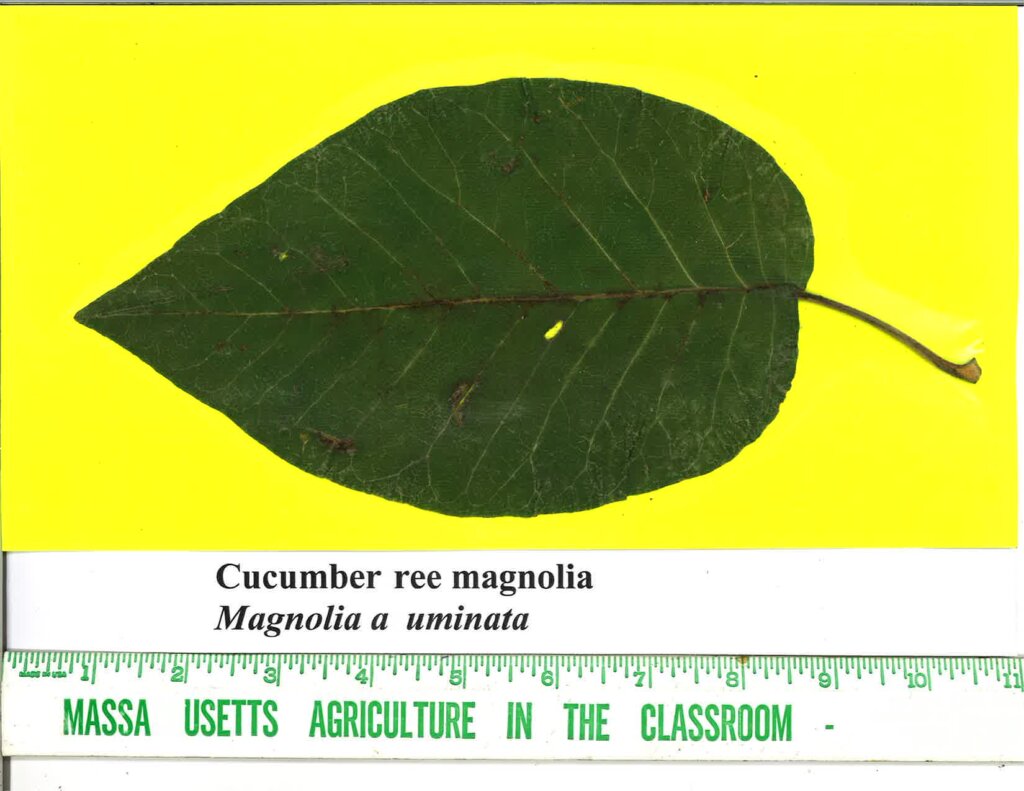Horticulture Highlight: Cucumbertree Magnolia, Magnolia acuminata
Jim Gorman May 21, 2024 Plants & Wildlife

…a wedge of spanakopita and a platter of shaved lamb
-Karen An-Hwei Lee
strewn on pita bread with yogurt cucumber dip-…
Talk of food may capture the attention of some people. Thoughts of cucumbers might further focus a few. We do not want to add to the abundant misleading information available today. So, we remind all that cucumbers do not grow on trees.

However, plant names sometimes are curious. Cucumbertree Magnolia, Magnolia acuminata is a case in point. Justification comes from the June appearance of this tree’s immature fruit. At a mere two-to-three-inches long, greenish, erect, some agreed these appear mini cucumber-like, hence the name Cucumbertree Magnolia.
Magnolia is a large genus of at least 200 different species, native to eastern North America, Central America, the West Indies, South America and east and southeast Asia. At Mount Auburn, we grow over fifty magnolias from eight different species and several hybrids. Previously we have reviewed several of these highly ornamental magnolias.

However, herein we present the more inconspicuous flowers of Cucumbertree Magnolia. Native from western New York to northern Georgia, to Missouri and eastern Oklahoma, these are large trees, 50 to 80-feet tall, the largest deciduous American magnolia. In mid-to-late-May as the tree’s leaves have reached full-size, greenish-yellow, 2 ½ - 3- inch long flowers begin to unfurl, often high up within the canopy, easily blending in with the foliage.
Beetles and likely other insects help with cross-pollination of these flowers. Beetles, some of the oldest insects, have assisted with magnolia (some of the oldest flowering trees) pollination over tens of millions of years. Wikipedia states, “Fossilized specimens of M. acuminata have been found dating to 20 million years ago, and fossils of plants identifiably belonging to the Magnoliaceae date to 95 million years ago.”

If successfully fertilized, the developing fruit producing the next generation’s seeds, will pass through its maturation appearing as our previously described mini cucumbers. This eventual aggregate of seeds will turn red and split open revealing multiple red seeds. These scarlet seeds often hang for a time on fine, white, tensile threads.
Fairness requires a few thoughts on cucumber, Cucumis sativus, a member of the Cucurbitaceae family. This is a vine native to India. Evidence reveals this to have been grown as a food source for over 3000 years. Also cultivated in ancient Egypt and later by the Greeks and Romans, it was brought by Christopher Columbus to the new world (Haiti) in 1494. In the early 1800’s it was growing in America’s colonial gardens.

On a future visit to Mount Auburn look for some of our Cucumbertree Magnolia, Magnolia acuminata on Halcyon Avenue, Mound Avenue, Beech Avenue, Cypress Avenue, Indian Ridge Path, Pilgrim Path, and Dielytra Path among other locations.

Comments